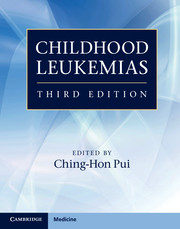Book contents
- Frontmatter
- Contents
- List of contributors
- Preface
- Section 1 History and general issues
- Section 2 Cell biology and pathobiology
- Section 3 Evaluation and treatment
- Section 4 Complications and supportive care
- 29 Acute complications
- 30 Late complications after leukemia therapy
- 31 Therapy-related leukemias
- 32 Infectious complications in leukemia
- 33 Hematologic supportive care
- 34 Pain management
- 35 Psychosocial issues
- 36 Nursing care
- Index
- Plate Section
- References
36 - Nursing care
from Section 4 - Complications and supportive care
Published online by Cambridge University Press: 05 April 2013
- Frontmatter
- Contents
- List of contributors
- Preface
- Section 1 History and general issues
- Section 2 Cell biology and pathobiology
- Section 3 Evaluation and treatment
- Section 4 Complications and supportive care
- 29 Acute complications
- 30 Late complications after leukemia therapy
- 31 Therapy-related leukemias
- 32 Infectious complications in leukemia
- 33 Hematologic supportive care
- 34 Pain management
- 35 Psychosocial issues
- 36 Nursing care
- Index
- Plate Section
- References
Summary
Introduction
In the treatment of children and adolescents with leukemia, nursing care complements and extends the efforts of other members of the healthcare team. The focus of nursing care is on the long-term as well as immediate needs of patients and their families and, therefore, includes strategies to prevent or manage complications and sequelae of the disease and its treatment. Another integral aspect of nursing care is assisting individual patients and families in achieving their developmental goals during treatment and follow-up.
This chapter, in addition to describing some of the challenges of nursing care of the child or adolescent with leukemia and providing practice recommendations specific to selected aspects of their care, offers a framework within which these aspects can be addressed and applies this framework to several practice examples. The supportive care framework includes six categories of needs and nine possible treatment phases in the spectrum of the cancer experience, as well as influencing factors that should be taken into consideration for each individual patient and family. The relationships between nursing strategies and both the identified supportive care needs and the phase of care are illustrated in examples of several major concerns that can arise in the treatment of childhood leukemia. For convenience, the examples are based primarily on the treatment of childhood acute lymphoblastic leukemia (ALL), but the same principles apply to acute myeloid leukemia (AML) and other leukemias in children. Whenever possible, the focus is on evidence-based practice.
- Type
- Chapter
- Information
- Childhood Leukemias , pp. 839 - 850Publisher: Cambridge University PressPrint publication year: 2012



